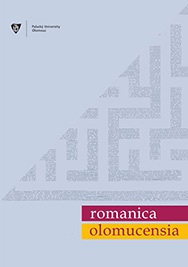«¿Qué pinga es esto?». Usos disfemísticos en el español de Cuba
"¿Qué pinga es esto?". Dysphemistic uses in Cuban Spanish
Author(s): Roxana Sobrino TrianaSubject(s): Lexis, Semantics, Pragmatics, Sociolinguistics, Cognitive linguistics
Published by: Univerzita Palackého v Olomouci
Keywords: Cuban Spanish; sexuality taboo; dysphemistic uses; pinga; insult; intensification;
Summary/Abstract: The research aims to examine the path that the lexeme pinga has had in the Spanish language, specifically in the Cuban variant of Spanish, to identify its current uses in this variety, and to describe the semantic, pragmatic, and discursive procedures that are manifested in them. It is based on the most recent linguistic theories about the taboo that define euphemistic and dysphemistic uses as cognitive processes of conceptualization of a forbidden reality. From a methodological point of view, the word pinga is traced in the main academic and Cuban dictionaries and a corpus was created from the entries for Cuba in CREA and CORPES XXI academic corpora, as well as the Cuban news portal CiberCuba. The search in dictionaries made possible the conclusion that, through the use of metaphor, pinga transferred its meaning to penis, which has been the only meaning recorded in Cuban dictionaries since the 19th century. In current Cuban Spanish, the word can be considered polysemic. Along with the meaning of the male sexual organ, there are others that show a process of loss of referential meaning, of resemantization and desemantization, common in euphemisms and dysphemisms. The uses that are identified correspond to the most frequent dysphemistic uses: insult, interjection, and intensification.
Journal: Romanica Olomucensia
- Issue Year: 33/2021
- Issue No: 1
- Page Range: 119-134
- Page Count: 16
- Language: Spanish

